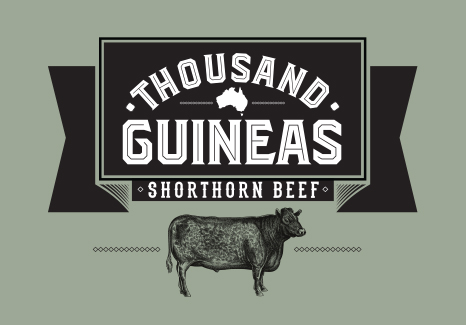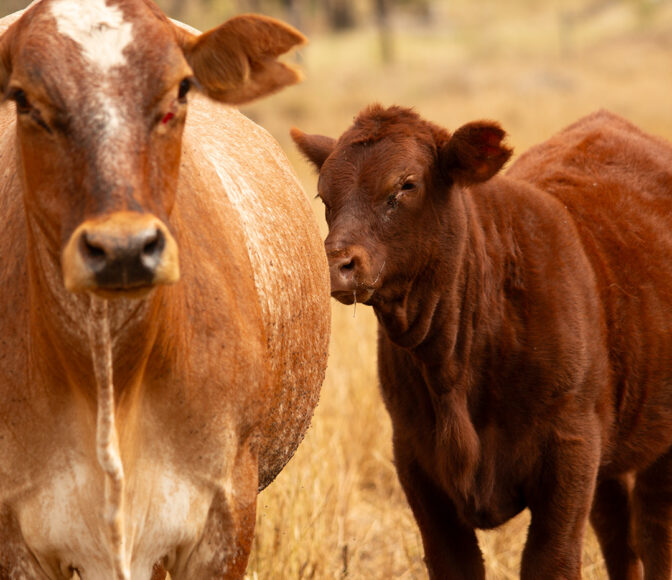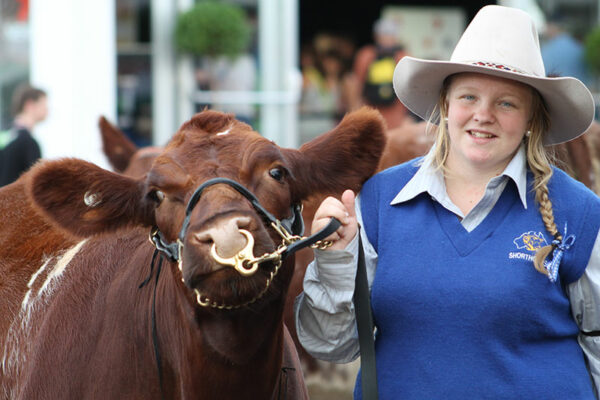Why Shorthorns?
History
The Shorthorn breed keeps the oldest breed registry in the world and Shorthorn cattle first arrived in Australia in 1800. In 1825 the first registered Shorthorn cattle arrived in Australia, however by 1890 they accounted for 50% of all temperate cattle and 100% of all cattle in the difficult Northern climate.
The Modern Shorthorn
Shorthorn cattle are bred to solve problems, not create them.
Balancing out all the economically important traits for your business, not just a few, means providing you with an easy care, efficient and productive cow base, producing quality steers suited to a wide variety of markets.
The Shorthorn breed offers balanced, multi trait excellence, designed to increase productivity by impacting all areas of economic importance, not just a few.
Proof
In 2000, Shorthorn Beef commenced a progeny test program , called Durham Research and Development
The first program of its type in the world, Durham Research and Development produced progeny from 2001-2010. Performance records from DRD were used to develop EBV’s for the Shorthorn breed, and others, as well as improve accuracies. This research has carried forward into the Shorthorn Beef IGS analysis.
Whether for Pure bred or Crossbred purposes, utilising Shorthorn Genetics allows breeders to differentiate their programs, and increase their overall productivity and profitability.
The Shorthorn Breed today is backed by science, and the world’s first of its kind, Durham Research and Development providing you with the confidence that Shorthorn cattle deliver as described.
Market Access
Shorthorn Cattle deliver high compliance rates and extremely consistent performance across a variety of market specifications, whilst requiring less feed to achieve it. This is why Shorthorns are in high demand today.
This performance level is why Shorthorns enjoy price parity and access to all mainstream markets in Australia.
Underpinned by science, the Durham Research and Development progeny test program, commercial breeders can access one of Australia’s most innovative solutions to increase productivity and profit.
Eating Quality
Shorthorn beef has developed an enviable reputation for it’s unique flavour, tenderness, consistency and overall eating quality, receiving tremendous feedback as a unique and high value product from chefs and consumers alike.
Shorthorn beef is marketed directly to consumers through the JBS Australia Shorthorn branded beef program, Thousand Guineas, with product consumed through out Australia but also into a burgeoning demand from Japan and Korea.

Diversity
Australia is a nation of varying seasons and climatic extremes, which provides unique challenges to Australian beef producers. Shorthorn females are extremely adaptable, across a wide variety of environments, and maintain production and fertility under seasonal adversity.
Shorthorn cattle have excellent marbling traits, and combine these with high yield percentages. They are also extremely efficient converters of feed.
Cross Breeding
Shorthorns are also one of the most complimentary breeds in the world, having formed the basis of over 40 breeds worldwide.
Roger Clemons – Wongi Pastoral Co
“Our Shorthorns are consistently meeting the brand specifications. They have wonderful maternal traits and are good as a crossbreeding base. We have never made marbling a selection point but Shorthorns have shown their marbling is equal to any comparative breed.”
Shorthorn Beef offers access to the worlds largest multibreed genetic evaluation, IGS, providing EPD’s on purebred, crossbred and composite cattle.
Proof
In 2000, Shorthorn Beef commenced a progeny test program , called Durham Research and Development
The first program of its type in the world, Durham Research and Development produced progeny from 2001-2010. Performance records from DRD were used to develop EBV’s for the Shorthorn breed, and others, as well as improve accuracies. This research has carried forward into the Shorthorn Beef IGS analysis.
Whether for Pure bred or Crossbred purposes, utilising Shorthorn Genetics allows breeders to differentiate their programs, and increase their overall productivity and profitability.
The Shorthorn Breed today is backed by science, and the world’s first of its kind, Durham Research and Development providing you with the confidence that Shorthorn cattle deliver as described.
Market Access
Shorthorn Cattle deliver high compliance rates and extremely consistent performance across a variety of market specifications, whilst requiring less feed to achieve it. This is why Shorthorns are in high demand today.
This performance level is why Shorthorns enjoy price parity and access to all mainstream markets in Australia.
Underpinned by science, the Durham Research and Development progeny test program, commercial breeders can access one of Australia’s most innovative solutions to increase productivity and profit.
Eating Quality
Shorthorn beef has developed an enviable reputation for it’s unique flavour, tenderness, consistency and overall eating quality, receiving tremendous feedback as a unique and high value product from chefs and consumers alike.
Shorthorn beef is marketed directly to consumers through the JBS Australia Shorthorn branded beef program, Thousand Guineas, with product consumed through out Australia but also into a burgeoning demand from Japan and Korea.





